20 of the Best Clarinet Players of All Time
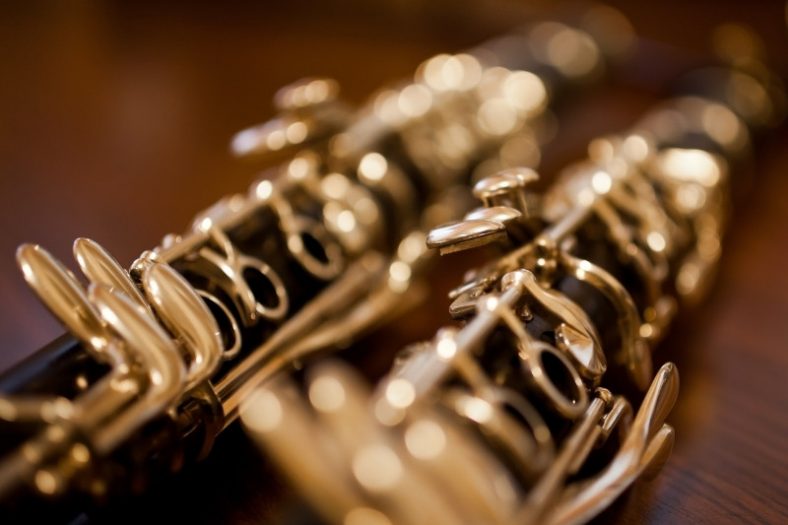
Welcome to my definitely not definitive list of the 20 best clarinetists of all time! Music appreciation is subjective, but if you enjoy excellent orchestral or brass band musical pieces featuring a woodwind instrument, like the clarinet, then take a stroll through my list of famous clarinet players and broaden your horizons.
Contents
- 20. Sharon Kam
- 19. Giora Feidman
- 18. George Lewis
- 17. Johnny Dodds
- 16. Harold Wright
- 15. Johann Simon Hermstedt
- 14. Pete Fountain
- 13. Buddy DeFranco
- 12. Vasilios Saleas
- 11. Carl Baermann
- 10. Heinrich Baermann
- 9. Anton Stadler
- 8. Richard Stoltzman
- 7. Hüsnü Senlendirici
- 6. Sidney Bechet
- 5. Woody Herman
- 4. Artie Shaw
- 3. Martin Fröst
- 2. Sabine Meyer
- 1. Benny Goodman
20. Sharon Kam
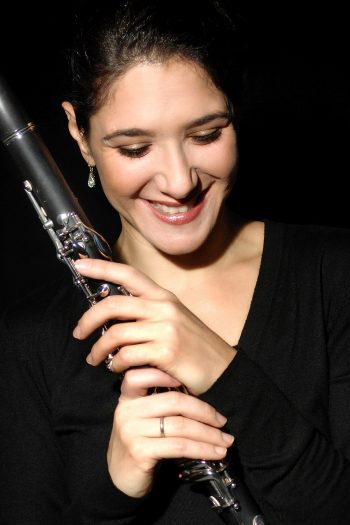
Sharon Kam is an Israeli-born modern classical clarinetist who studied at Julliard School of Music and debuted on the clarinet with the Israel Philharmonic Orchestra at just 16 years old. Sharon has an enviable career performing with some of the largest orchestras in the world and maintains a career as a solo clarinetist. Mozart’s clarinet pieces are her favorite and the focus of her career. Sharon performs as a chamber musician and actively premiers new works by contemporary composers like Krzysztof Penderecki and Herbert Willi.
Sharon has a diverse discography and has won two ECHOs for instrumentalist of the year.
Key tracks: Mozart Clarinet Concerto and the Clarinet Quintet using the basset clarinet
19. Giora Feidman
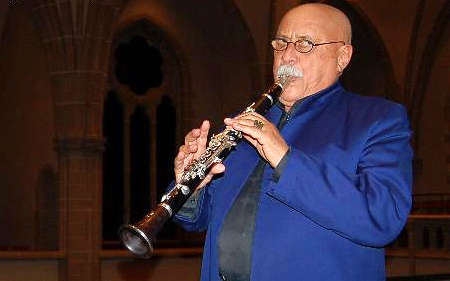
Giora Feidmann hails from Argentina after his parents relocated there to escape persecution. He is a clarinetist that specializes in Klezmer music. Klezmer music is very specific instrumental music originating from Ashkenazi Jews. Klezmer music is played for listening, particularly at important social events like weddings, bar mitzvahs, and other Jewish holidays.
Giora performed with the Israel Philharmonic Orchestra and remained a member for 20 years. He recorded an album as recently as 2020.
Key tracks: Oyf’n Pripetshok / Nacht Aktion from Schindler’s List soundtrack, Mazel Tov
18. George Lewis
Our first entry, George Lewis, was an American jazz clarinetist from New Orleans who achieved acclaim later in his career. He founded the New Orleans Stompers in the 1920s, but up until the 1940s, he didn’t earn enough income from his music and worked on the docks until he had an accident. His signature song, Burgundy Street Blues, was recorded while convalescing. Eventually, in 1950, his career and band took off, and he spread traditional New Orleans jazz across the world.
Key tracks: Burgundy Street Blues and When the Saints Go Marching In
17. Johnny Dodds
Johnny Dodds was an African-American clarinetist and saxophonist and is widely considered one of the Jazz age architects. He was posthumously inducted into the Jazz Hall of Fame for his contributions. A lyrical wonder, Johnny led bands and recorded prolifically during his tenure and was one of the greatest blues players of his time. Someone who held his own with jazz great Louis Armstrong.
Johnny only started with the clarinet at age 17 but caught on fast and was mostly self-taught. He, unfortunately, passed away just before the New Orleans revival movement began.
Key tracks: Clarinet Wobble, Melancholy, and Wild Man Blues
16. Harold Wright
Harold Wright was an American clarinetist who graduated from the Curtis Institute in Philadelphia. He served as the principal clarinetist of the Boston Symphony Orchestra for many years. His musical style had American, German, and French influences, and he was a critic’s darling and a noted chamber musician. Harold performed with all the leading string quartets, including the Julliard and Vermeer Quartets.
Later in life, Harold taught at Boston University, New England Conservatory, and Tanglewood Music Center.
Key tracks: Clarinet Concerto In A, K.622: 2. Adagio and Fantasiestücke
15. Johann Simon Hermstedt
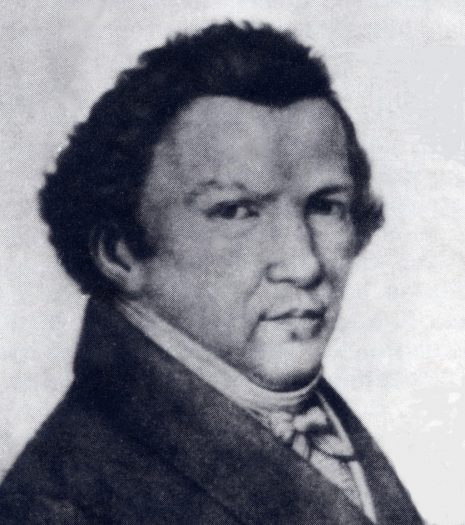
Johann Simon Hermstedt is widely considered one of the most famous clarinetists of the 19th century. Johann was the Duke of Schwarzburg-Sondershausen’s court clarinetist who enjoyed a lifelong collaboration with composer Louis Spohr. Spohr wrote four clarinet concertos and several other clarinet works with Hermstedt’s skills in mind. What sealed Sphor’s and Hermstedt’s friendship and collaboration was Hermstedt’s willingness and determination to make Sphor’s very technical compositions work without asking Sphor to make them easier. Hermstedt also performed as a clarinetist in Mozart’s Quintet.
Key tracks: Fantasy and Variations, Op.81 and Clarinet Concerto No.1, Op.26
14. Pete Fountain
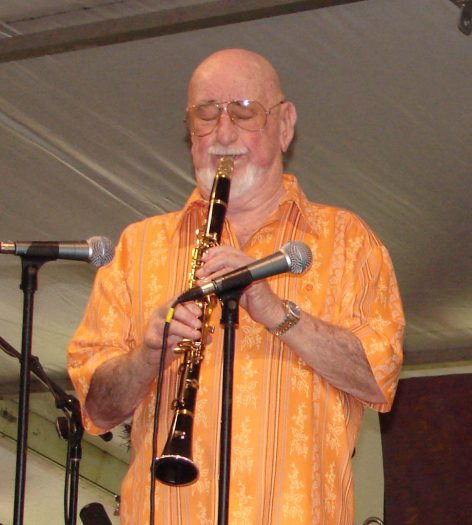
Pete Fountain was an American jazz clarinetist and national treasure who achieved years of national television fame. Inspired by Benny Goodman, Pete enjoyed a warm and rich sound produced by large bore clarinets. His performance of Tiger Rag on several television shows like The Johnny Carson Show thrust him into the spotlight, and Pete became a commercial success with over 50 albums to his name.
Pete had an ear for harmony, and his distinctive sound came from the crystal mouthpieces he used.
Key tracks: Tiger Rag and Just a Closer Walk with Thee
13. Buddy DeFranco
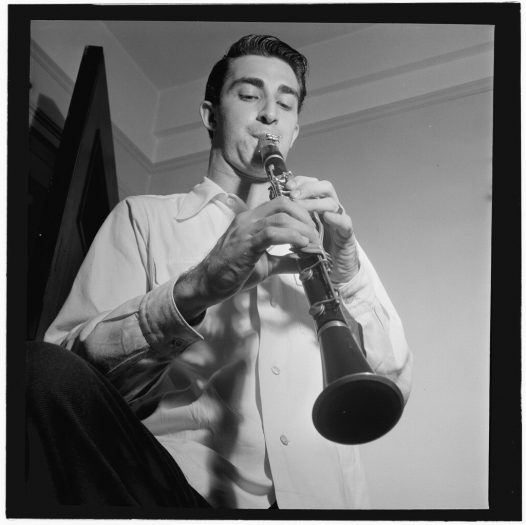
Buddy DeFranco, another American clarinetist on our list, straddled the era of jazz and bebop. While he started as a jazz clarinetist, World War 2 had an overwhelming effect on the music scene. Buddy, recognized as an improviser on the clarinet, enjoyed the bebop era. Like another member of this list, Buddy toured, albeit more successfully, with Billie Holiday in Europe and, in the 1950s, explored polytonal music with a quartet. Notable concert appearances include dates with Nat King Cole and Charlie Parker, and he eventually led the Glen Miller Orchestra for almost a decade, from 1966 to 1974.
Buddy was a busy man and a professional musician who recorded over 180 albums. A musician’s musician.
Key tracks: Billie’s Bounce, Satin Doll, and Charlie Cat II
12. Vasilios Saleas
Vasilios Saleas is a Greek clarinetist whose genres of music include pop, folk, and Laiko, which is a unique Greek musical genre. Vasilios was proficient on the clarinet at age 14. Since the early 1990s, Vasilios has worked with Vangelis Papathanasiou, and his first solo album was titled Orama: The Music of Vangelis. Before this, he served as an accompanist to several Greek singer-songwriters, such as Dionysis Savvopoulos.
Vasilios is known for adding the clarinet to Greek pop music.
Key tracks: Elsewhere, Tearful Eyes, Love Theme from Blade Runner
11. Carl Baermann
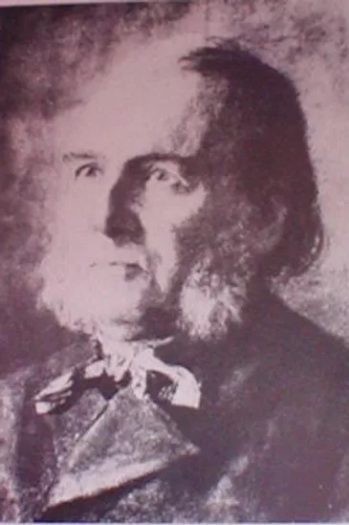
The son of Heinrich Baermann, Carl succeeded his father at court as head clarinetist at Heinrich’s retirement. Carl toured Europe with his father, who taught him the clarinet and basset horn from the late 1820s to 1830s. Mendelssohn composed a piece for the father/son duo that they premiered in 1833. The composition was titled Konzert Stücke, Opp. 113 & 114, and it was well-received.
Baermann pioneered the Baermann-Ottensteiner key system for the clarinet that was popular in the late 19th century. An article published in 1861 reviles his compositions as excessive, but they are useful and technically impressive works for contemporary clarinetists.
Key tracks: Konzert Stücke, Opp. 113 & 114 and Op.29, Geisterstunde1
10. Heinrich Baermann
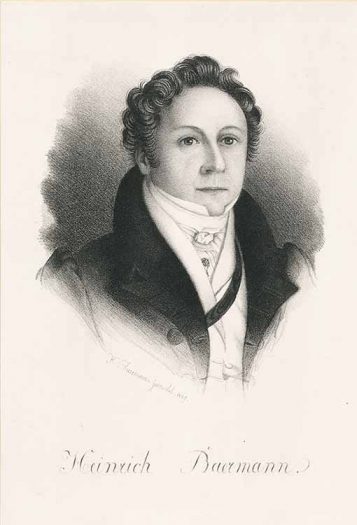
Heinrich Baermann was an influential German clarinet virtuoso who had several composers compose pieces with his instrument in mind, including Mendelssohn. Heinrich influenced perceptions of the clarinet as a romantic instrument. His style is considered smoother and richer than some of his contemporaries. Heinrich had a court appointment that he retained until his retirement and gave concerts throughout Europe.
Heinrich is painted by history as an inspiring and romantic military man who helped the composer Weber achieve popularity by performing his works.
Key tracks that were recorded: Concertstück in G minor, Concertino in C minor, and Concertino in E-flat major
9. Anton Stadler
Mozart’s muse and contemporary, Anton Stadler, was a renowned clarinetist nicknamed the Miracle of Bohemia. From Austria, Anton played both the clarinet and the basset horn. Mozart wrote the Clarinet concerto for Anton Stadler, and he performed it for the first time publicly in October 1791.
Several other works were inspired by or composed for Anton by Mozart, like the Clarinet Quintet in A major. Both the composer and the clarinetist belonged to the same Masonic lodge. Their musical lives were indelibly intertwined.
Key tracks: Clarinet concerto, Clarinet Quintet in A major and Kegelstatt
8. Richard Stoltzman
Richard Stoltzman is one of the best-known classical clarinetists in recent history. A prolific musical artist and two-time Grammy award winner who is highly sought after for concert appearances. While Richard is well known for his classical music, his initial love of music was influenced by his father’s penchant for big band jazz. He has been extremely successful in combining his jazz and classical careers. One of the chamber group TASHI founders, he was also the first solo clarinetist who performed at both the Hollywood Bowl and Carnegie Hall.
Richards feels that music is essential to life and has more than 80 releases under his belt.
Key tracks: Philadelphia, Earth Prayer, and Innisfree
7. Hüsnü Senlendirici
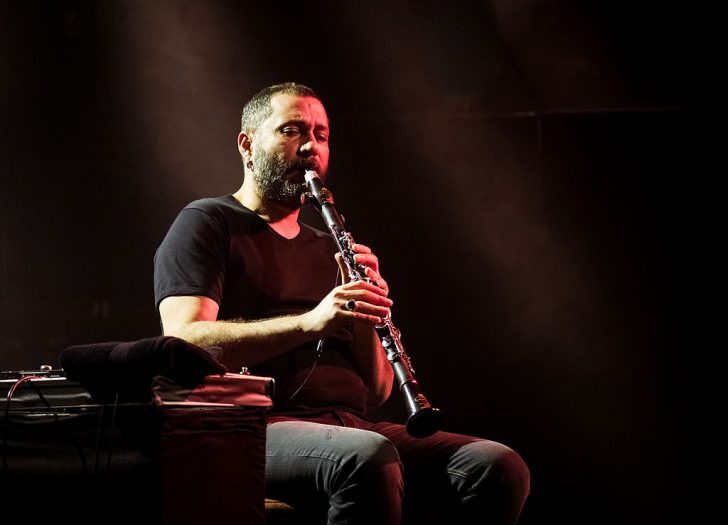
Hüsnü Senlendirici is a contemporary Turkish clarinetist from a family of musicians; both his grandfathers played the clarinet. The clarinet plays a vital role in Turkish folk music. Most well-known for his belly dancing music with his ensemble Sulukule, Hüsnü attended the State Conservatory of Turkish Music but eventually left without attaining his degree. He has been a member of several bands, including Laço and later the Taksim Trio. Hüsnü has been actively performing as a musician since 1998 and released his solo album Hüsn-ü Klarnet in 2005.
Key tracks: Adagio in G Minor, Uşşak Oyun Havası and İstanbul İstanbul Olalı
6. Sidney Bechet
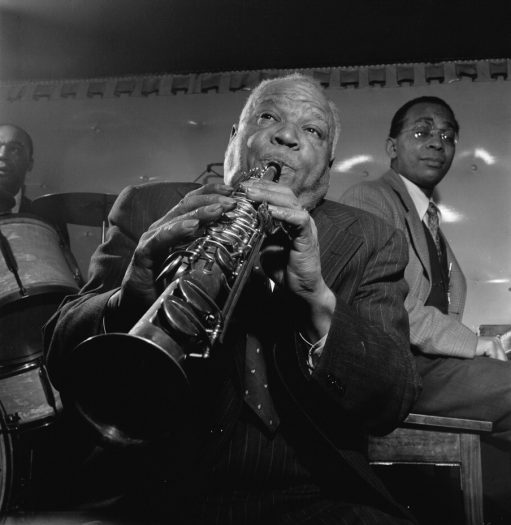
Sidney Bechet was a Creole jazz clarinetist and saxophonist who improvised jazz swing along with Louis Armstrong (a trumpeter). They helped widen the gap between jazz and ragtime. A pioneer of his time, Sidney’s style of performing was expressive, and he preferred to dominate the stage. Sidney toured large parts of America before going to Europe, eventually settling in Paris. Once in Europe, Sidney picked up the soprano saxophone, which became his main instrument.
Sidney began his career as a clarinetist at age 6. Throughout his colorful life, he contributed masterful blues music, with the one of the earliest known uses of rhythm changes that the world still appreciates today.
Key tracks: Shag, Summertime, and Blues of Bechet
5. Woody Herman
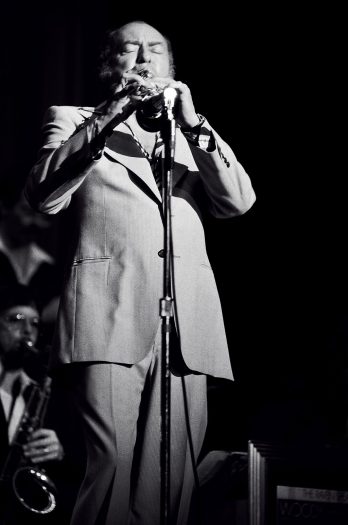
Woody Herman was an American jazz clarinetist, a child prodigy who sang, played the clarinet and the saxophone. He was referred to as the Boy Wonder of the Clarinet and recorded his first album at 16, titled The Sentimental Gentleman from Georgia. In the 1940s, Herman referred to his succession of bands as his Herds and was one of the few big band leaders to incorporate bebop material.
Woody performed throughout his lifetime, drawing inspiration from diverse musical material, including the Beatles. He continued to perform live concerts until well into the 1980s.
Key tracks: Four Brothers, Woodchopper’s Ball and Caldonia
4. Artie Shaw
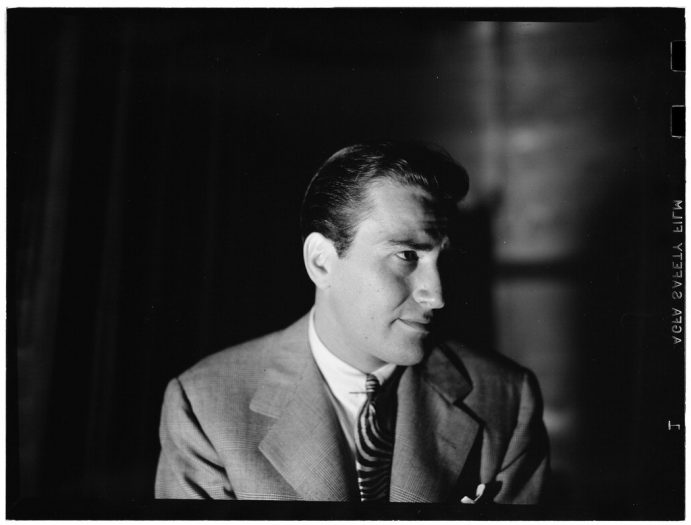
A contemporary of Benny Goodman, Artie Shaw was a popular American clarinetist that valued experimentation, and he was what is considered a boundary-crossing artist. He was most prominent during the height of the 1930s swing era, where he served as both a clarinetist and big bang leader. His big band style was innovative, and he combined jazz with modern classical compositions from Europe. Artie was one of the first bandleaders to incorporate stringed instruments into his musical arrangements, combined with a jazz section and clarinet.
Additionally, he was the first big band leader to sign a full-time black female singer in the shape of the inestimable Billie Holliday. However, this did not work out, and due to prejudice, she eventually left the band.
Key tracks: Interlude in B-Flat, Begin the Beguine and Frenesi
3. Martin Fröst
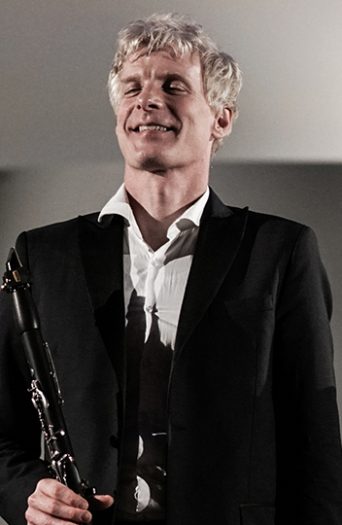
Martin Frost is nothing short of an artistic genius. A Swedish clarinetist and conductor of the Swedish Chamber Orchestra, he has his roots in classical music. Still, he is willing to experiment and take his clarinet to the very edge. Martin was one of our famous clarinet players to receive the Léonie Sonning Music Prize.
Martin enjoys collaborating with other artists. Since 2013 he has launched projects every two or three years with the Royal Stockholm Philharmonic Orchestra that sees him perform as a clarinetist, lyricist, conductor, and even occasionally as an actor or dancer. The current project is titled Exodus. The previous three were called Dollhouse, Genesis, and Retropia
Key tracks: Klezmer dances from Dollhouse and Mozart Clarinet Concerto part 1
2. Sabine Meyer
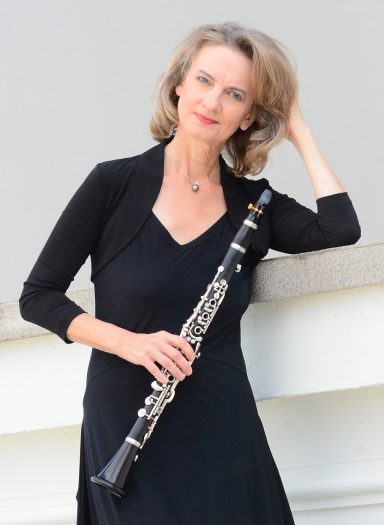
Sabine Meyer is a contemporary German clarinetist and renowned soloist who plays the clarinet, basset clarinet, and basset horn. In the early 1980s, she founded the Trio di Clarone with her husband and brother, also clarinetists. Sabine is committed to chamber music and plays many different classical music styles, performing regularly throughout the year. Sabine often collaborates with jazz clarinetist Michael Riessler, expanding on contemporary classical pieces.
Sabine is an eight-time Echo Klassik award winner and a trailblazer for aspiring female clarinetists who brought attention back to the clarinet as a successful solo instrument.
Key tracks: Clarinet concerto in a major, k. 622 (reconstruction for basset horn): i. allegro and clarinet concerto in a major, k. 622: ii. adagio
1. Benny Goodman
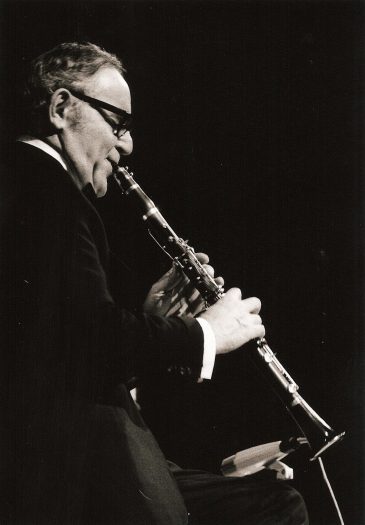
Our final entry, Benny Goodman, aka the King of Swing, was at the height of his fame in the mid-1930s. Benny was an American icon that ignored the very clear racial segregation of his time. Influenced by the New Orleans jazz clarinetists, he made his professional debut in 1921. Subsequently, as a bandleader, he played with his band at Carnegie Hall in 1938 in front of a sold-out audience. This concert is one of the key moments that helped jazz music become more mainstream.
Jazz eventually took a backseat to rock ‘n-roll, but this didn’t phase Benny in the slightest, and his range as a clarinetist is well documented. In 1982, Benny Goodman was honored with lifetime achievements in swing music.
Key Tracks: Sing, Sing, Sing (with a swing) and Why Don’t You Do Right?
Whether you recognize any of the 20 best clarinetists of all time or not, these famous clarinet players have pervaded the mainstream media. And I can almost guarantee that you will recognize some of the key tracks. Whether you appreciate jazz, blues, folk music, or classical compositions, there is something for all musical tastes.
Image Credits:
George Lewis – Image by: Nomo michael hoefner / http://www.zwo5.de, CC BY-SA 3.0, via Wikimedia Commons
Giora Feidman – Image by: Marcimarc at English Wikipedia, Public domain, via Wikimedia Commons
Sharon Kam – Image by: Maike Helbig, photograph, CC BY-SA 4.0, via Wikimedia Commons
Johann Simon Hermstedt – Image by: gescannt und bearbeitet von Krajo, Public domain, via Wikimedia Commons
Pete Fountain – Image by: I, Sumori, CC BY-SA 3.0, via Wikimedia Commons
Buddy De Franco – Image by: William P. Gottlieb, Public domain, via Wikimedia Commons
Heinrich Baermann – Image by: Unknown authorUnknown author, Public domain, via Wikimedia Commons
Hüsnü Senlendirici – Image by: Andreas Lawen, Fotandi, CC BY-SA 3.0, via Wikimedia Commons
Sidney Bechet – Image by: William P. Gottlieb, Public domain, via Wikimedia Commons
Woody Herman – Image by: Tom Marcello Webster, New York, USA, CC BY-SA 2.0, via Wikimedia Commons
Artie Shaw – Image by: William P. Gottlieb, Public domain, via Wikimedia Commons
Martin Fröst – Image by: Hreinn Gudlaugsson, Editor/Bearbeiter User:Gisbert K, CC BY-SA 4.0, via Wikimedia Commons
Sabine Meyer – Image by: scholzshootspeople, photograph, CC BY-SA 4.0, via Wikimedia Commons
Benny Goodman – Image by: Hans Bernhard (Schnobby), CC BY-SA 3.0, via Wikimedia Commons





